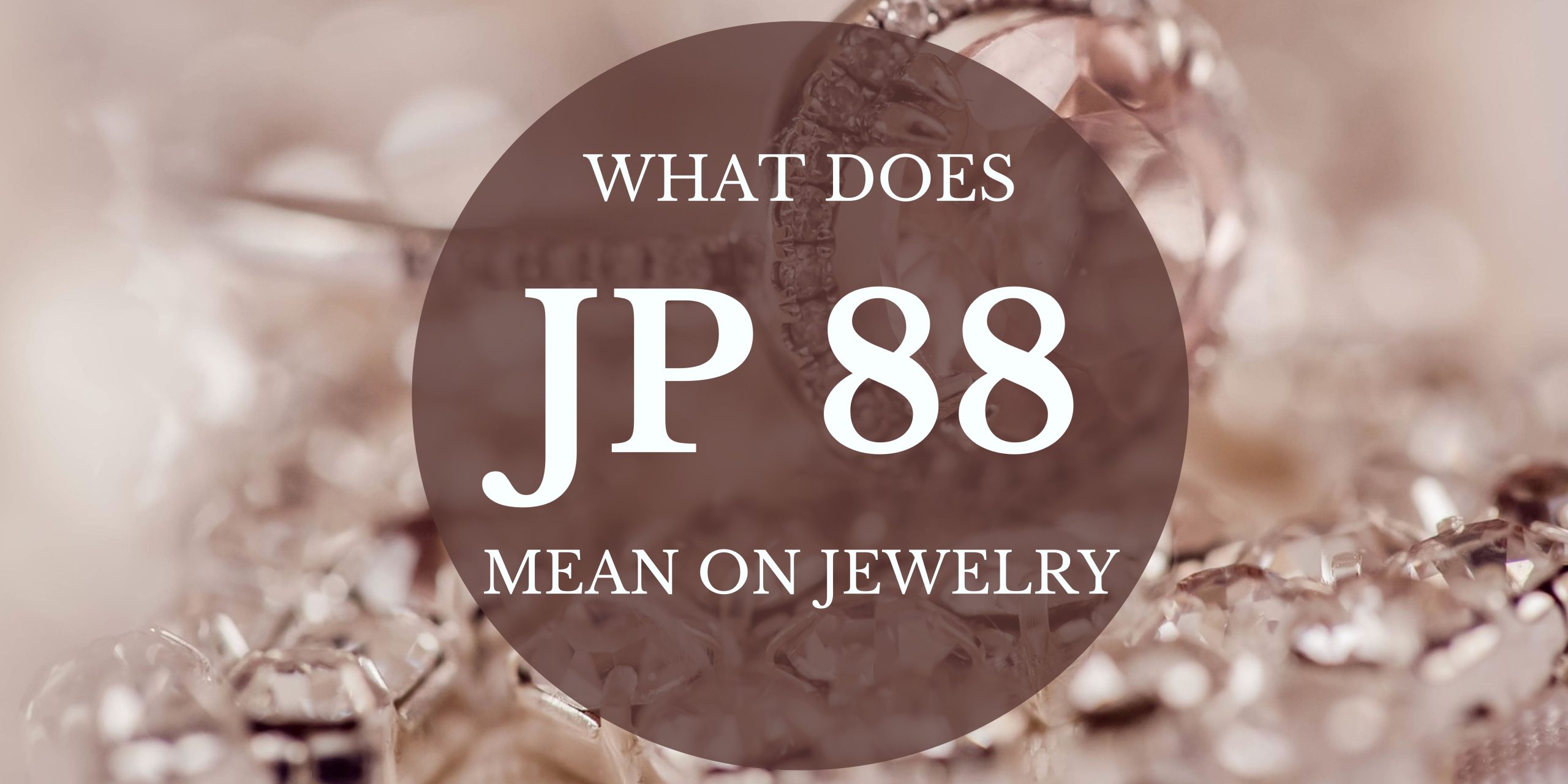Ever spotted the cryptic “JP 88” inscription on your favorite ring and wondered what it meant? You’re not alone! This marking has intrigued jewelry enthusiasts for years, with various interpretations swirling around. But fret no more, for this blog post delves deep into the world of ring markings, cracking the code of “JP 88” once and for all.
First Things First: Understanding Hallmarks
Jewelry hallmarks are tiny stamps or engravings hidden on the inner band of rings, bracelets, and other precious pieces. These markings serve as a kind of “fingerprint,” revealing valuable information about the metal’s composition, origin, and sometimes, even the maker.
The “JP” Part: Unveiling the Maker’s Mark
The “JP” portion of the inscription usually refers to the jeweler’s mark or maker’s mark. This unique symbol identifies the individual or company that crafted the ring. Unfortunately, without additional context or knowledge of specific maker’s mark databases, pinpointing the exact jeweler behind “JP” can be challenging.
The “88” Part: Decoding the Mystery
Now, onto the intriguing “88.” Here are the most common interpretations:
- Metal Purity: In some cases, “88” might indicate the metal purity. For example, in some countries, “88” could represent 88% silver content, similar to the more common “925” marking for sterling silver. However, this interpretation is less likely, as “JP” itself doesn’t typically signify a specific metal standard.
- Ring Size: Another possibility is that “88” denotes the ring size. While not a universal standard, some jewelers, particularly in certain regions, might use a two-digit system for sizing. In this case, “88” could represent a size 8 or 18, depending on the jeweler’s specific sizing chart.
- Date or Model Number: In rarer instances, “88” could signify the date of manufacture or a model number assigned by the jeweler. This is less common, but possible for certain brands or specific lines of jewelry.
Unearthing More Clues: Additional Markings
To decipher the true meaning of “JP 88” on your ring, it’s crucial to examine any other markings present. Look for symbols, letters, or numbers that might offer additional context. Here are some helpful tips:
- Metal hallmarks: Search for standard metal purity markings like “925” for silver, “750” for 18k gold, or “PT950” for platinum. These can indicate the metal type and narrow down the possible interpretations of “JP 88.”
- Country hallmarks: Some countries have their own hallmarking systems. Identifying the country hallmark can provide clues about the jeweler’s origin and potential sizing standards.
- Maker’s mark databases: Online resources and databases often compile and document maker’s marks used by jewelers worldwide. If you can identify any other symbols or letters alongside “JP,” searching these databases might reveal the jeweler’s identity and shed light on their marking system.
Consulting a Jeweler or Appraiser
If the mystery of “JP 88” persists, consider seeking help from a professional jeweler or appraiser. Their expertise and access to specialized resources can often unlock the secrets hidden within the markings, providing valuable insights into your ring’s history and composition.
Remember
- The meaning of “JP 88” can vary depending on the jeweler, country of origin, and specific marking system used.
- Examining other markings and symbols on the ring can offer valuable clues.
- Consulting a jeweler or appraiser can provide expert insights and definitive answers.
So, the next time you spot the enigmatic “JP 88” on your ring, don’t be discouraged! With a little detective work and the help of this guide, you’re well on your way to unraveling its secrets and unlocking the fascinating story behind your unique piece of jewelry.
Frequently Asked Questions (FAQs)
The “JP 88” mark on a ring refers to the jewelry’s maker and its purity. “JP” stands for Japan and “88” indicates it is made of 88% pure silver. This mark guarantees the authenticity and quality of the piece.
The “JP” jewelry mark usually refers to the country of origin that the piece of jewelry comes from, which is Japan. It signifies that the jewelry has been produced in Japan, known for its craftsmanship and attention to detail.
While “JP” commonly stands for Japan in jewelry marks, it is essential to consider the overall context and other markings on the piece. In some cases, “JP” might represent another country or a different meaning entirely. Consult with a professional jeweler to clarify any doubts about the specific mark on your jewelry.
The “JP 88” mark specifically indicates the purity of silver and is commonly seen on silver rings. It may not be relevant to other types of jewelry, such as gold or diamond pieces. Different marks are used to signify the authenticity and quality of various materials used in jewelry production.
Jewelry marks can vary depending on the country, the jewelry maker, and the materials used. While certain marks are standardized in specific regions, others may be unique to a particular jeweler or brand. It is crucial to research and identify the specific mark on your jewelry to understand its meaning accurately.
The absence of jewelry marks does not necessarily indicate that the piece is of poor quality or lacks authenticity. Some jewelry, especially vintage or handcrafted pieces, may not bear any visible markings. However, it is advisable to consult with a professional jeweler or appraiser to assess the piece’s value and ensure its quality.

